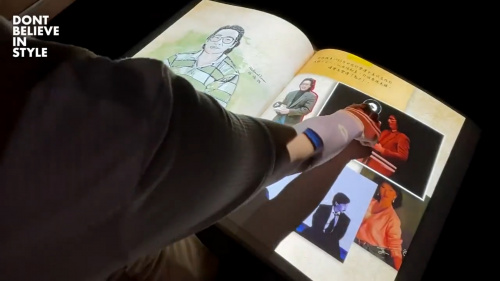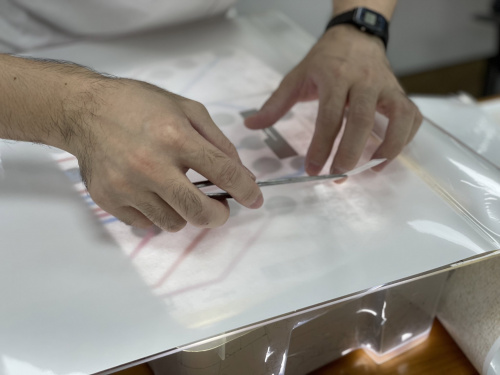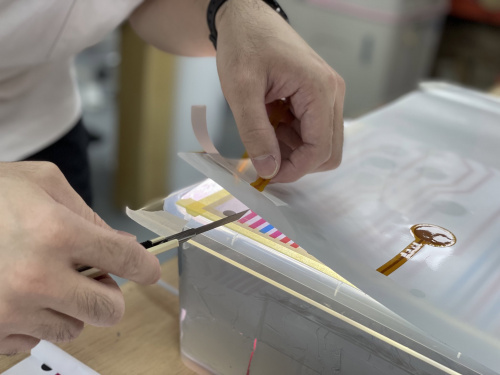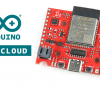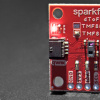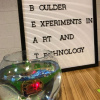The Hong Kong Heritage Museum, known as one of Hong Kong’s best “lesser known” attractions, houses a number of permanent exhibits as well as ever changing special and touring exhibits, plus an interactive Children’s Discovery Gallery, all covering art, culture and history. One of the museum’s permanent exhibits, titled “Hong Kong Pop 60+,” is where this new installation is housed. If you recall, Alexson was using using the SparkFun Simultaneous RFID Reader, along with three Bare Conductive Touch Boards, to create an interactive book using projection mapping to bring the pages to life. Take a look at a little bit of the project in action on Alexson's Twitter page.
The book as it is now displayed in the “Hong Kong Pop 60+” exhibit in the Hong Kong Heritage Museum.
In the original design, each page had an embedded RFID tag, shielded on one side with aluminum foil to prevent false reads. However, concerned not only for false positives but false negatives as well - that is, the reader not picking up the tag on a page turn - Alexson decided to double up, using two RFID tags on each page for redundancy.
Alexson doubled up on RFID tags to eliminate missed events. (Photo credit: Alexson Chu)
Another adaptation from the initial design came about due to concerns over wear and tear. As an interactive part of a permanent exhibit, Alexson knew that this book would be subjected to possibly thousands of page turns, some of them perhaps not as gentle as one would hope. For this reason, the copper tape used for prototyping was replaced with flexible PCBs.
“[For] the ‘touch’ part at the end we switched from using copper tape and conductive ink to flexible PCB for extra robustness,” Alexson told me.
For a project that is going to be handled six days a week with no end date in sight, this is a smart move, and a great example of a designer making adjustments based on the needs of a project and its environment.
Needing both flexibility and strength, the move was made from copper tape and conductive ink to flexible PCBs. (Photo credit: Alexson Chu)
One thing that Alexson noticed and shared with me was the fact that the Simultaneous RFID Reader would get exceedingly hot when running for long periods of time. As this project will be running for at least eight hours a day, six days a week, this could eventually lead to thermal shutdown, a disappointing museum exhibit, and a curator who’ll think twice when it comes time to find someone to create their next installation. To help keep things (relatively) cool, a heat sink was added, along with a high cfm fan. This is also a good time to emphasize the importance of considering your project’s enclosure. Some chips, while able to run a multitude of high-level tasks, do so with the cost being extremely high operating temperatures. Always make sure that you have sufficient air flow across your project, even if it means creating the space for a heat sink, fan, or as is the case with this project, both.
”Any sufficiently advanced technology is indistinguishable from magic.” ~ Arthur C. Clarke
While most of us probably won’t get the chance to visit this exhibit in person, just seeing this project, its seamless integration of multiple input and display technologies, and the final product, should be inspiration enough to get the creativity flowing in most of us. If by chance you do find yourself in Hong Kong, you can enjoy this project and many other historical, artistic, cultural and educational experiences at the Hong Kong Heritage Museum.
